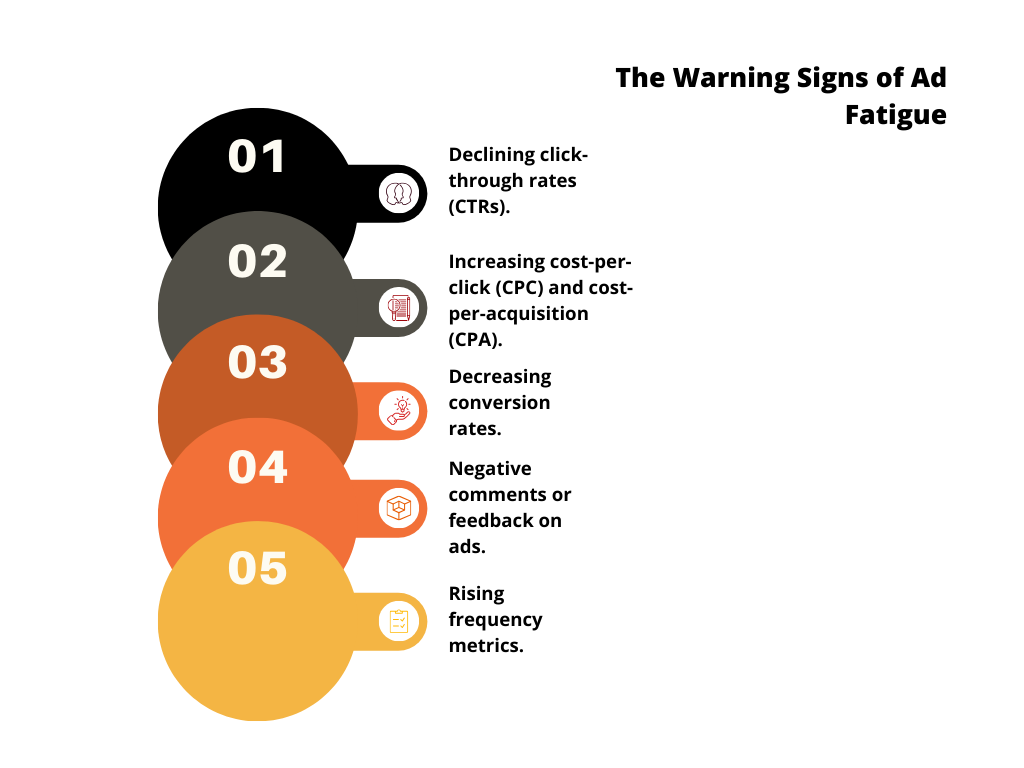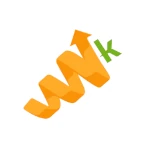7 Proven Ways to Overcome Ad Fatigue in 2025
You’ve seen the warning signs: plummeting click-through rates, soaring costs per acquisition, and decreasing engagement metrics. Your once-successful ad campaign has hit the dreaded wall of ad fatigue.
If this sounds familiar, you’re not alone. Recent research reveals that 61% of consumers are less likely to purchase from companies that repeatedly show the same ads. Even more concerning, 70% of consumers have unsubscribed from brands in the last three months due to overwhelming messaging.
Ad fatigue isn’t just an annoyance—it’s actively damaging your marketing ROI and brand perception. But with the right strategies, you can revitalize your campaigns and reconnect with your audience. Here are 7 ways to overcome ad fatigue in 2025.
TABLE OF CONTENTS:
- Key Takeaways
- What Is Ad Fatigue? Understanding the Problem
- 1. Creative Rotation and Refreshment Strategies
- 2. Advanced Audience Segmentation and Targeting
- 3. Personalization and Relevance Enhancement
- 4. AI-Driven Dynamic Creative Optimization
- 5. Embracing Interactive Ad Formats
- 6. Cross-Channel Optimization
- 7. Proactive Performance Monitoring and Analytics
- Making Ad Fatigue a Thing of the Past
Key Takeaways
- Ad fatigue occur when your audience becomes bored and annoyed of your ads, and your campaign no longer generates sales.
- The 7 ways to overcome ad fatigue include rotating your ad creatives, segmenting your audience, personalizing your ads, using dynamic creative optimization, trying interactive elements, optimizing your ad campaign for different channels, and monitoring your results.
- Case studies reveal that brands lower ad costs and boost CTRs when implementing these tactics.
What Is Ad Fatigue? Understanding the Problem
Ad fatigue occurs when your audience sees your ads so frequently that they become desensitized, bored, or even annoyed by them. Your branding and messaging no longer resonate with them, and you’ll struggle to acquire new customers. This psychological response stems from a principle called habituation—our brains naturally tune out stimuli that we have encountered repeatedly.

The warning signs of ad fatigue typically include:
- Declining click-through rates (CTRs).
- Increasing cost-per-click (CPC) and cost-per-acquisition (CPA).
- Decreasing conversion rates.
- Negative comments or feedback on ads.
- Rising frequency metrics.
Research demonstrates just how significant this impact can be. A study found that participants exposed to high-frequency ads experienced a 30% decline in their engagement compared to those who saw ads less frequently.
And consumers are increasingly vocal about their frustration—76% of U.S. TV or video streaming viewers explicitly stated they’d like to see fewer repeated ads.
1. Creative Rotation and Refreshment Strategies
One of the most effective ways to overcome ad fatigue is by implementing a consistent creative rotation strategy. Examples include diversifying your ad creatives and using dynamic creative optimization. This way, you can maintain audience interest and prevent the habituation that leads to disengagement.
Optimal Refresh Timing
How often should you update your creatives? While there’s no universal answer, most experts recommend refreshing ad creative every 7-14 days for high-frequency platforms like Facebook and Instagram. For lower-frequency channels like LinkedIn, you might extend that timeline to 14-21 days.
The key is monitoring performance metrics rather than adhering to rigid schedules. When you notice engagement metrics beginning to decline (often after 10,000-20,000 impressions), it’s time for a refresh.
Case Study: Net Conversion
Challenge: A digital marketing firm was experiencing high ad frequency leading to creative fatigue, increased costs per result, lower click-through rates, and reduced engagement.
Solution: The team implemented a systematic creative rotation strategy with performance tracking at the individual creative level. They began frequently replacing fatigued ads using real-time holistic engagement metrics.
Results: The company achieved a lower cost per result and improved CTR across campaigns with higher overall engagement, demonstrating that regular creative rotation, measured at the creative level, can significantly reduce ad fatigue and improve campaign performance.
Key takeaway: Consistent monitoring and refreshing of ad creative at the individual ad level—not just the campaign level—can significantly extend campaign effectiveness.
Creative Refresh Best Practices
When refreshing your creative, consider these proven approaches:
- Use AI and automation: AI can help refresh your creative content and messaging.
- A/B testing elements: Systematically test different headlines, images, calls-to-action, and ad formats to identify what resonates best with your audience.
- Maintain brand consistency: While refreshing creative, keep your core brand elements consistent to build recognition.
- Tell a story across ads: Use sequential messaging that evolves rather than simply repeating the same message.
- Leverage seasonal themes: Align creative updates with holidays, seasons, or relevant events to add timely relevance.
2. Advanced Audience Segmentation and Targeting
Proper audience segmentation is crucial for combating ad fatigue. Divide your audience into distinct groups so you can deliver more relevant messages and control the frequency of exposure. Here’s more information on how to do this.
Effective Frequency Capping
Frequency capping limits how often individual users see your ads within a specified timeframe. Most platforms allow you to set these limits, but finding the optimal frequency requires trial and error.
Research suggests that the optimal ad frequency varies by campaign objective:
| Campaign Objective | Recommended Frequency Cap (per week) |
|---|---|
| Brand Awareness | 3-5 impressions |
| Consideration | 5-8 impressions |
| Conversion | 8-10 impressions |
Importantly, these caps should be platform-specific, as tolerance for ad repetition varies between channels like Facebook, YouTube, and display networks.
Micro-Segmentation Approaches
Beyond basic demographic segmentation, consider these advanced approaches:
- Behavioral segmentation: Group users based on their interactions with your website, app, or previous ads.
- Engagement-based segmentation: Create separate segments for users who have engaged with your ads versus those who haven’t.
- Customer journey stage: Tailor messaging to where users are in their buying journey—awareness, consideration, or decision.
- Lookalike audience expansion: Regularly refresh lookalike audiences to reach new prospects with similar characteristics to your best customers.
By combining segmentation with frequency controls, you can ensure that users receive varied and relevant messaging without being overwhelmed. Learn more about effective segmentation in our guide on Facebook advertising strategies.
3. Personalization and Relevance Enhancement
Personalization is a powerful solution to ad fatigue. When ads feel tailored to specific needs and interests, audiences are more likely to engage even after multiple exposures. Here’s how to personalize ads at scale.
Data-Driven Personalization
Effective personalization requires the right data and implementation, such as:
- First-party data utilization: Leverage your CRM data, website behavior, and purchase history to create highly targeted segments.
- Dynamic content insertion: Use variables to automatically customize elements, such as names, locations, or previously viewed products.
- Contextual relevance: Align ad creative with the content users are currently consuming.
- Behavioral triggers: Deploy ads based on specific user actions or inactions.
A/B Testing for Personalization
Continuous testing is essential for effective personalization. Consider testing:
- Different levels of personalization (subtle vs. explicit).
- Various personalization signals, including behavior-based and preference-based.
- Personalization timing (immediate vs. delayed).
Case Study: Voodoo
- Challenge: Mobile gaming company Voodoo struggled with ad fatigue due to high-volume ad campaigns, leading to declining engagement and increased production costs.
- Solution: They adopted template-based automation to rapidly create and personalize multiple ad variants with robust A/B testing and multivariate experimentation.
- Results: The company achieved significant time savings in ad creation, enhanced campaign efficiency, improved engagement metrics, and reduced production costs.
- Key takeaway: Automation and personalization through systematic A/B testing can effectively combat ad fatigue, driving efficiency and improving campaign outcomes.
4. AI-Driven Dynamic Creative Optimization
Artificial intelligence has revolutionized how marketers combat ad fatigue. Strategies like dynamic creative optimization (DCO) use AI to automatically generate and test thousands of ad variations, delivering the most relevant combination to each user.
According to industry research, 30% of agencies, brands, and publishers have fully integrated AI across their media campaign lifecycle, with those who haven’t yet adopted these technologies falling behind.
DCO Approaches
To implement DCO effectively:
- Create modular creative assets: Develop a library of interchangeable headlines, images, CTAs, and background elements.
- Define targeting rules: Establish rules for which asset combinations work best for specific audience segments.
- Set optimization goals: Determine whether you’re optimizing for clicks, conversions, engagement, or other metrics.
- Monitor and refine: Regularly analyze which combinations perform best and update your asset library accordingly.
5. Embracing Interactive Ad Formats
Interactive ads transform passive viewing into active engagement, significantly extending ad freshness and reducing fatigue. These formats invite user participation, creating memorable experiences rather than interruptions.
Effective Interactive Formats
Consider these engaging formats to combat ad fatigue:
- Polls and quizzes: Invite users to express opinions or test knowledge, providing valuable data while increasing engagement.
- Playable ads: Particularly effective for mobile apps and games, these mini-experiences let users try before they download.
- Augmented reality filters: Allow users to try products or create shareable branded content virtually.
- 360° videos: Enable users to control their viewing perspective, increasing the time they spend with your content.
- Shoppable ads: Transform passive viewing into active shopping by making products directly purchasable within the ad.
When implementing interactive ads, ensure they load quickly and function properly across devices. Even the most creative interactive ad will create negative brand associations if the experience is frustrating.
Measuring Interactive Ad Success
Interactive ads require different success metrics than traditional formats. Consider tracking:
- Interaction rate (percentage of viewers who interact).
- Average interaction time.
- Completion rate for multi-step interactions.
- Social sharing rate.
- Post-interaction conversion rate.
For a deeper understanding of how engaging ad formats can help overcome the challenges of ad blockers and user disengagement, check out our analysis of how ad blockers are changing the online advertising landscape.
6. Cross-Channel Optimization
Ad fatigue doesn’t occur in isolation—it happens across the entire digital system. A comprehensive cross-channel approach can help maintain freshness and relevance.
Channel-Specific Fatigue Patterns
Different platforms experience fatigue at different rates:
- Social media platforms: Generally experience the fastest fatigue due to high frequency and scrolling behavior.
- Display networks: Moderate fatigue rates, especially with retargeting campaigns.
- Search ads: Typically experience the slowest fatigue, as they’re triggered by active user queries.
- Email: Susceptible to fatigue, but can be mitigated through segmentation and content variety.
Cross-Channel Sequencing Strategies
Instead of running the same message across all channels, consider these sequencing approaches:
- Channel-specific creative: Adapt your message to each channel’s unique format and user behavior.
- Journey-based sequencing: Gradually advance messaging as users move through awareness to consideration to conversion.
- Channel rotation: Periodically shift the budget between channels to give audiences a break from seeing your ads in the same places.
- Cross-platform storytelling: Tell different parts of your brand story across various platforms, creating a cohesive narrative without repetition.
For maximum effectiveness, implement cross-channel frequency caps that account for total ad exposure across all platforms, not just within individual channels.
7. Proactive Performance Monitoring and Analytics
Detecting and addressing ad fatigue before it severely impacts performance requires vigilant monitoring and analysis. The right metrics and tools can help you identify fatigue early and respond appropriately.
Key Fatigue Indicators to Monitor
Keep a close eye on these metrics to catch fatigue in its early stages:
- Frequency: Average number of times users see your ads in a given period.
- Frequency distribution: How many users see your ad 1x, 2x, 3x, etc. (not just the average).
- Click-through rate (CTR) by frequency: How engagement changes as frequency increases.
- Ad relevance scores: Platform-specific metrics like Facebook’s relevance score or Google’s quality score.
- Negative feedback rate: Proportion of users who hide, report, or negatively interact with your ads.
- Day-over-day performance decay: The rate at which key metrics decline over time.
Many platforms now offer fatigue-specific analytics. For example, Facebook provides frequency and relevance metrics that can help you assess your Facebook ads relevance score.
Automated Fatigue Response Systems
Consider implementing these automated responses to combat fatigue:
- Performance-triggered creative rotation: Automatically swap in new creatives when engagement metrics fall below thresholds.
- Audience cycling: Rotate through different audience segments to give each group a break from your ads.
- Budget redistribution rules: Shift spending away from fatigued segments toward fresher opportunities.
- Dayparting adjustments: Modify when your ads appear based on engagement patterns.
Making Ad Fatigue a Thing of the Past
Are you experiencing the warning signs of ad fatigue? If your ads are no longer converting, try implementing creative rotation, audience segmentation, personalization, AI-driven optimization, interactive formats, cross-channel approaches, and vigilant monitoring. Remember that overcoming ad fatigue isn’t a one-time fix but an ongoing process. This way, you can continue attracting a healthy stream of leads with your ad campaign.
Ready to revitalize your ad campaigns and eliminate fatigue for good? Work with the leading ad agency that specializes in keeping campaigns fresh, engaging, and high-performing.




